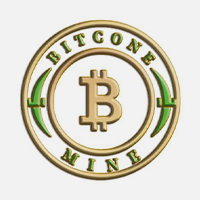It’s been discussed an innumerable number of times but the fact of the matter still remains that Bitcoin — despite its amazing potential as a store of value (SOV) — has remained largely untapped, with much of its liquidity sitting dormant in wallets across the globe.
And, despite tangible efforts in recent months to help bridge this gap, the market has continued to miss the presence of that one definitive trustless bridge capable of connecting Bitcoin to other networks (all while maintaining a high level of security that the currency is known for).
Most recently, sBTC has emerged as a solution transforming Bitcoin’s interaction with the broader blockchain ecosystem from the ground up.
Unlike traditional wrapped Bitcoin solutions that rely on centralized custodians or federation-based systems, sBTC introduces a permissionless and trustless bridge that enables Bitcoin to flow freely across multiple blockchains.
Built on the Stacks layer, it implements a unique decentralized ‘two-way peg’ mechanism that allows users to move their Bitcoin in and out of smart contracts without any trust assumptions.
Briefly, Stacks is a Bitcoin layer bringing fully expressive smart contracts to the original Bitcoin protocol without making any modifications to it. Every transaction is anchored and settled on the BTC blockchain wherein thanks to the use of a unique Proof of Transfer (PoX) mechanism, miners are able to send BTC to network participants in exchange for newly minted STX, interlinking both ecosystems economically.
Creating a holistic financial environment for Bitcoin
Over the last few months, sBTC has rapidly expanded its reach across multiple blockchains, with recent integrations with prominent networks like Solana and Aptos marking the project’s journey toward becoming the universal transfer rail for Bitcoin.
Moreover on a technical note, the protocol employs a decentralized signer network and ensures Bitcoin-irreversible L2 transactions, making it one of the few genuine Bitcoin layers according to several industry builders. This growing adoption seems to be further bolstered by an impressive roster of institutional backers, including industry leaders like BitGo, Axelar, Travala, CoinFlip, and Blockdaemon.
Lastly, Stacks’ unique position as the first SEC Reg-A+ US token offering and the third digital asset to be offered as a Grayscale Trust investment product has further established its long-term growth and adoption potential.
Bitcoin’s future corresponds with AI and DeFi markets. Here’s how
With novel sectors like Bitcoin DeFAI (Decentralized Finance with AI) beginning to gain rapid traction, the Stacks ecosystem seems uniquely positioned to help facilitate the convergence of AI with Bitcoin’s robust infrastructure — offering up unique sophisticated financial applications and automated trading strategies in the process.
Numerically speaking, the DeFAI market is already worth over a billion dollars. This is because the sector is making complex digital actions like jumping between different apps, connecting wallets, and manually entering details for every transaction — a staple of most DeFi platforms — obsolete.
To elaborate, by allowing users to employ basic instructions such as, “Swap 15 ETH for USDT” or “Deploy 1000 USDC into [x] liquidity pool,” the technology ensures that AI agents are put to work to help figure the best deal out for an individual in any given situation.
That being said, what truly separates the Stacks layer from the rest of the fray is its architecture which ensures every transaction is ultimately settled on Bitcoin, an architectural decision that has proven crucial for institutional adoption (as evidenced by Coinbase ranking Stacks as #25 in its prestigious Coin50 Index).
A bright future ahead?
Over the course of the coming few years, Bitcoin’s role within the DeFi market will become a focal point of discussion for many, since many experts believe that for the DeFi economy to reach its full potential, it must incorporate BTCs massive liquidity and network effect. In this context, sBTC is positioning itself as a crucial infrastructural piece enabling this integration toward a more interconnected future. Interesting times ahead.






























